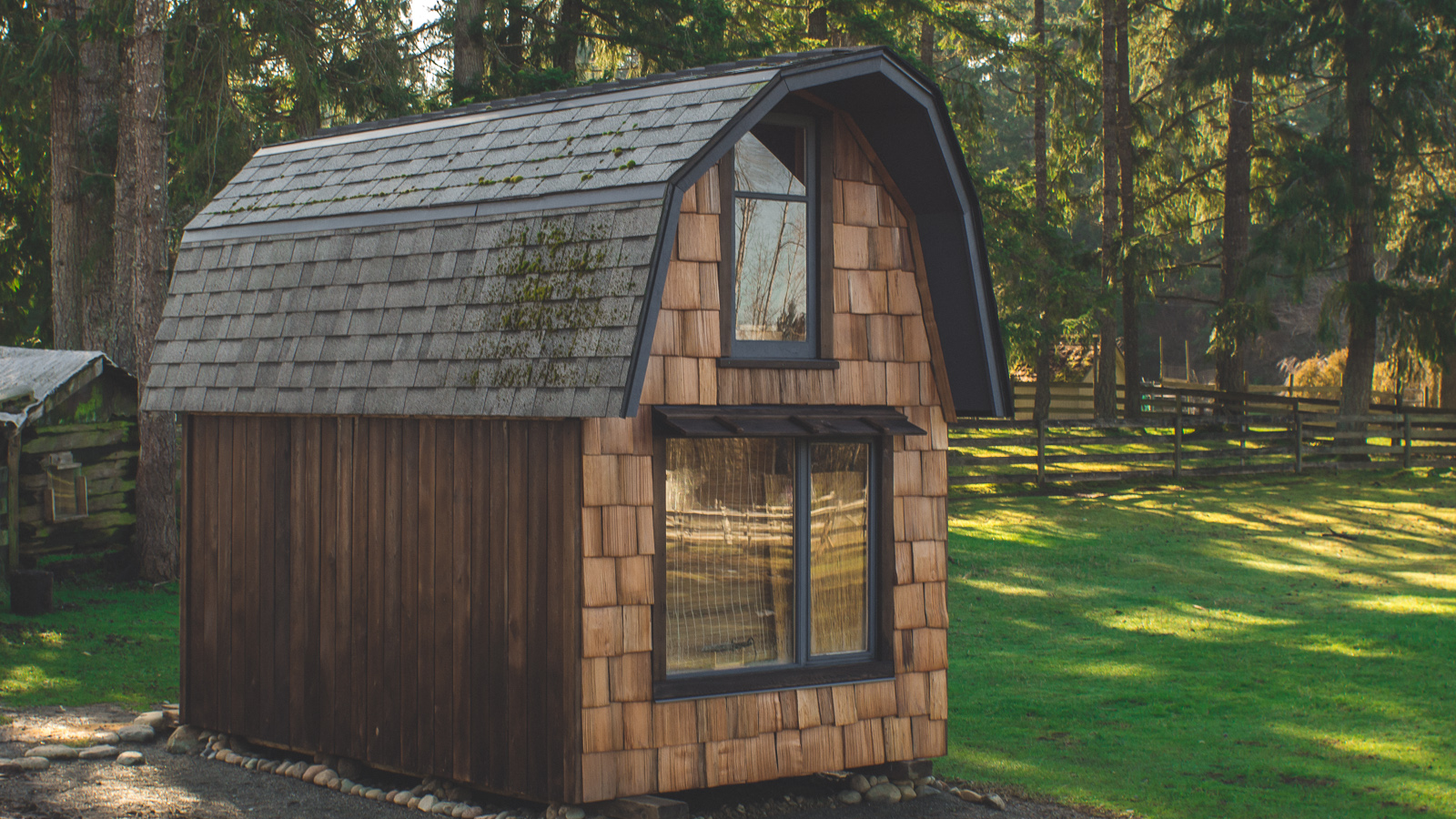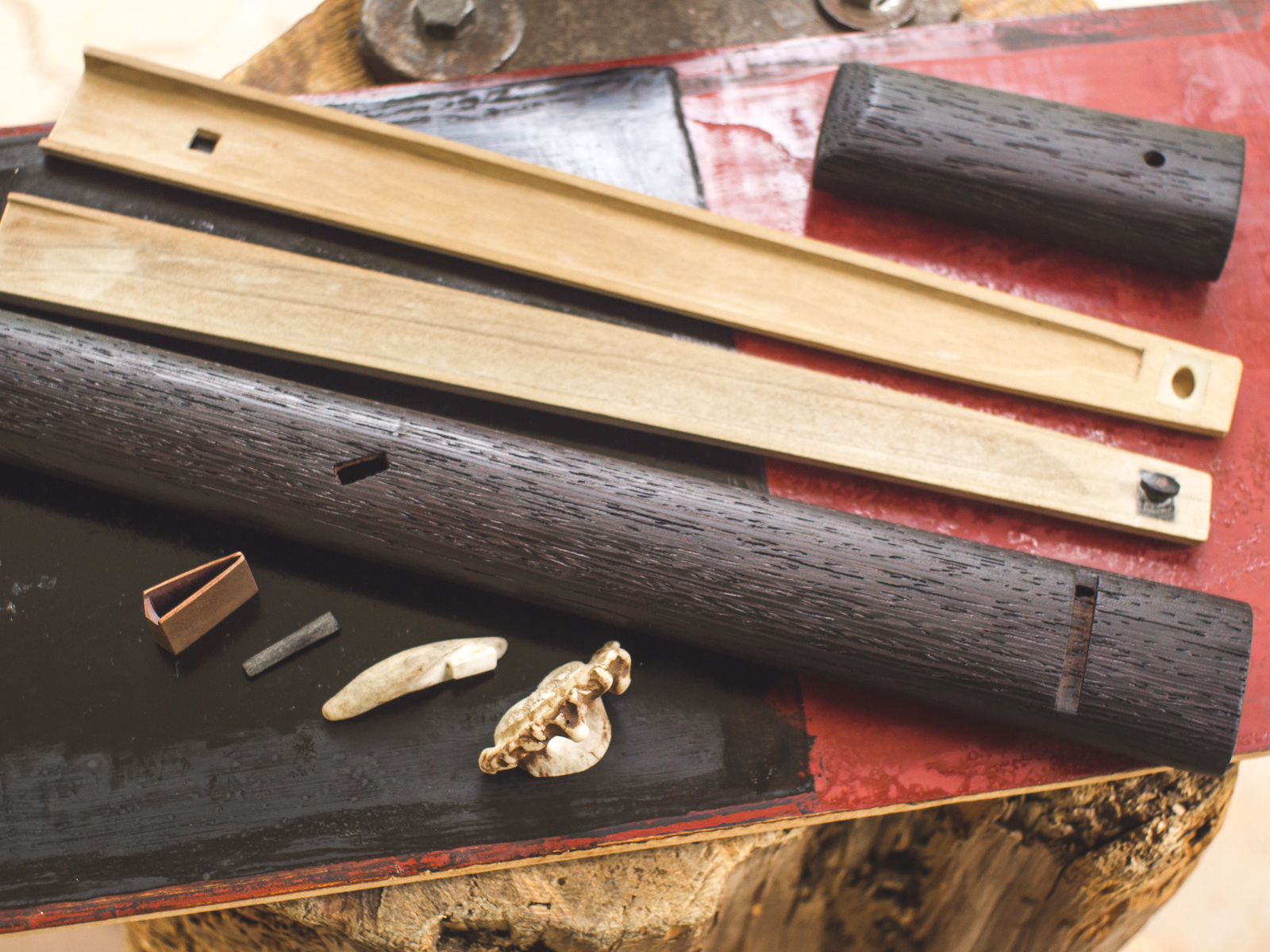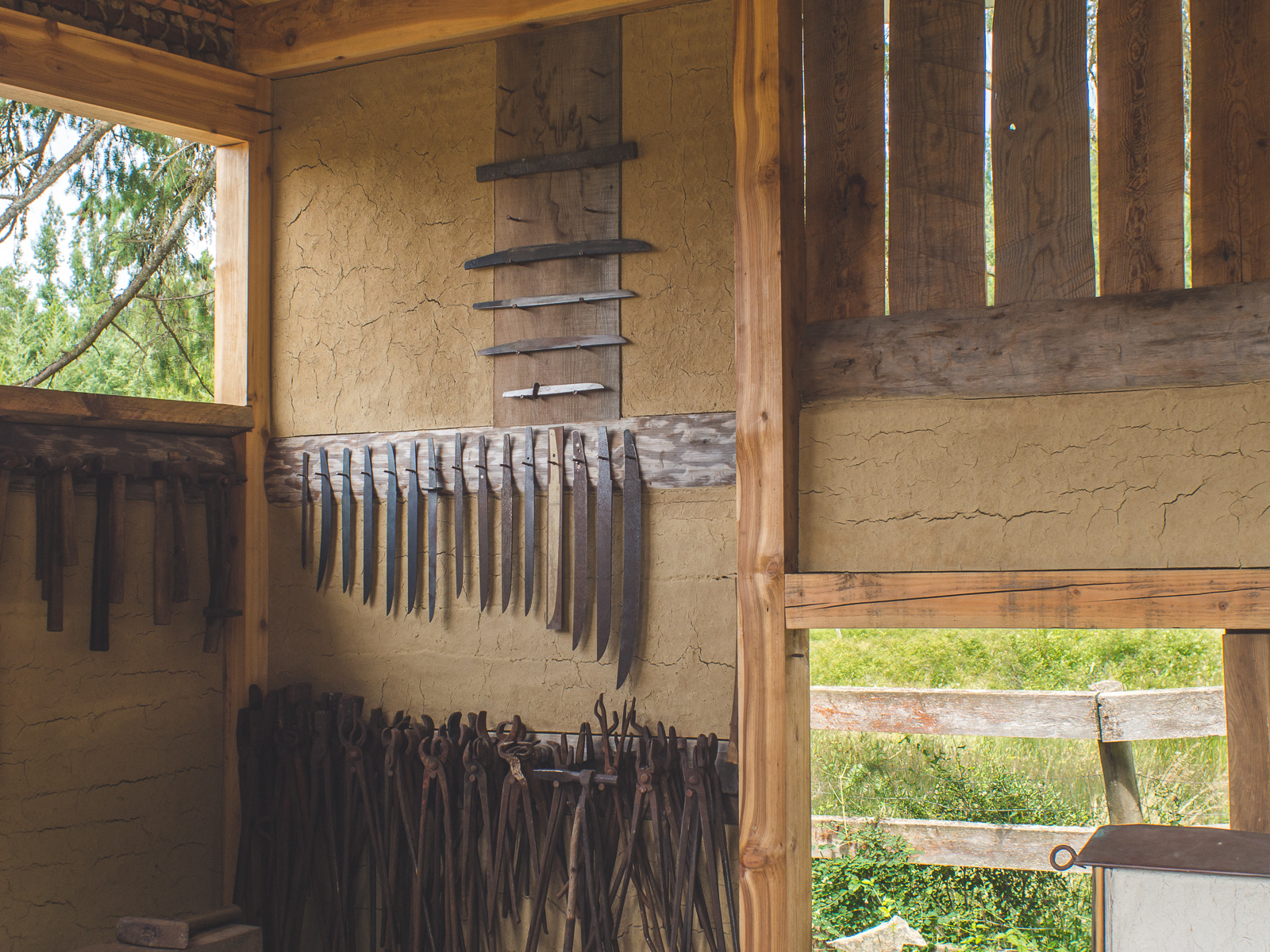-

Preparing the Shiage-ba (finishing shed)
Traditional knifemaking is generally divided into rough work and clean work. Forging, shaping, and kaji-togi polishing can be done in the kajiba, but finishing work must be done in a cleaner area. This small shiageba will provide work areas for carving saya (scabbards) and tsuka (handles), polishing blades, and other finishing work such as lacquering…
-

Preparing and Loading the Charcoal Kiln
The first fire is relatively small and is intended to dry out some of the moisture in the clay/earth around the kiln remaining after construction and before winter. After cooling and cleaning it out, a “floor” is created above the steel floor slats using thin boards and brown charcoal from previous charcoal runs. Then the…
-

Charcoal Kiln V.4.0
As part of the island kajiba project, reclaimed and natural materials were used to construct a larger traditional style charcoal making kiln. The basic concept is a simple chamber with a door on one end and a chimney on the other, insulated and sealed by being buried in clay/soil, and roofed to keep off the…
-

TLDW #27 – Forging a Saya Nomi (鞘鑿)
Saya-nomi (鞘鑿) are a type of Japanese chisel with several unique features designed for carving the inside of a wooden scabbard or handle. Hand forged from a reclaimed harrow tooth, the elongated neck is slightly curved for clearance and the bottom and side corners are slightly rounded and the tip is slightly bull-nosed to facilitate…
-

First Lighting of the Forge & Antique Habaki Utsushi (写)
First lighting of the newly rebuilt charcoal forge in the island kajiba followed by stamping the tang and then hand forging and filing a classical tanto style habaki, silver soldered in the charcoal forge and closely based on an antique Edo period habaki. An utsushi (写) is a closely based study of another work for…
-

Furusato Tanto
Furusato (故郷, pronounced “foo-roo-sah-toe”) means home place or hometown and contains the ideas of being rooted or grounded wherever one may sojourn, and a confidence and longing for return. This tanto has a simple and elegant form with a natural and humble mounting that reflects the rustic satoyama lifestyle and suits the aesthetics of the…
-

SOTW #20 – Assembling the Furusato Tanto
This discarded block of wood from the Congo/Zaire sat for several years waiting for the right blade to make the best use of it. This precious dark chocolate coloured hardwood is locally called Tshikalakala or Dikela, meaning turn around or circle back, and this particular piece has a slightly curving grain that follows the line…
-

TLDW #24 – Making an Ireko (nesting) Saya
An ireko saya (入れ子鞘, nesting scabbard) is a lining inside the saya which protects the blade from the hardwood. Furusato (故郷) means home place or hometown and contains the ideas of being rooted or grounded wherever one may sojourn, and a confidence and longing for return. This tanto has a simple and elegant form with…
-

Inome Tanto
The inome (pronounced “ee-no-may”, 猪の目, eye of the boar) name comes from the pierced heart-shape designs of the decorative o-seppa (washers) on either side of the tsuba (handguard). This lovely motif is ubiquitous in Japan, seen often in architecture, furniture, and sword mountings. In this context, the inome symbol conveys the idea of the focused,…
-

SOTW #19 – Assembling the Inome Tanto
The inome (pronounced “ee-no-may”, 猪の目, eye of the boar) name comes from the pierced heart-shape designs of the decorative o-seppa on either side of the tsuba. This lovely motif is ubiquitous in Japan, seen often in architecture, furniture, and sword mountings. This is the first of my blades to incorporate antique sword parts as part…
-

Island Forge: Part 7 – Kajiba Tour
This series of photo essays will document the preparation, construction, and set up of a simple swordsmith style kajiba (鍛冶場, forge building) from the ground up. The main inspiration for aesthetic, form, and technique is the humble Japanese inaka naya (納屋) style of a century ago. Swordsmith Forge The centerpiece of the kajiba is the…
-

Installing the Higuchi (tuyere)
Installing/repairing the higuchi (tuyere), the point where the air enters the forge and temperatures are very high. In this case the fire clay to form the tuyere and fit it to the brick construction Japanese swordsmith forge is a traditional brasque recipe consisting of 6:2 charcoal powder/fines to natural clay, mixed with just enough water…
-

Island Forge: Part 6 – Interior Walls & Shutters
This series of photo essays will document the preparation, construction, and set up of a simple swordsmith style kajiba (鍛冶場, forge building) from the ground up. The main inspiration for aesthetic, form, and technique is the humble Japanese inaka naya (納屋) style of a century ago. Earthen Walls The interior walls are arakabe (荒壁), a…
-

Island Forge: Part 5 – Tsuchikabe
This series of photo essays will document the preparation, construction, and set up of a simple swordsmith style kajiba (鍛冶場, forge building) from the ground up. The main inspiration for aesthetic, form, and technique is the humble Japanese inaka naya (納屋) style of a century ago. Earthen Plaster The upper sections of the walls are…
-

Island Forge: Part 1 – Foundation
This series of photo essays will document the preparation, construction, and set up of a simple swordsmith style kajiba (鍛冶場, forge building) from the ground up. The main inspiration for aesthetic, form, and technique is the humble Japanese inaka naya (納屋) building style of a century ago. Foundation The location for the kajiba slopes down…
